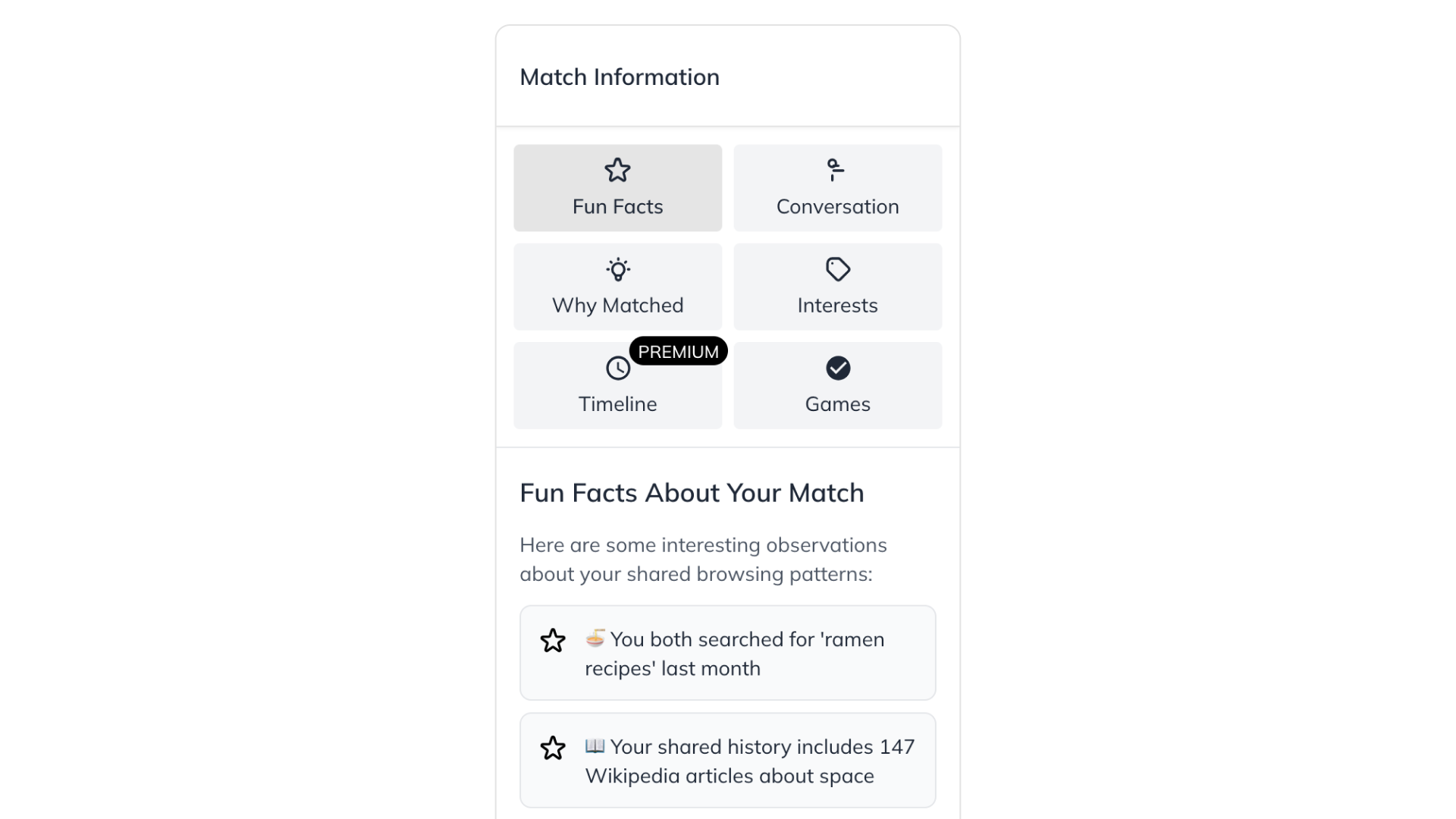Table of Contents
Overview
Tired of endless swiping and generic dating profiles? Browser.dating offers a refreshingly unconventional approach to finding love (or at least, a compatible internet user). Developed by media artist Dries Depoorter, this platform uses AI to analyze your browser history and match you with others who share your digital habits. It’s a fascinating experiment in data privacy and digital identity, wrapped up in a minimalist dating interface. Let’s dive into what makes Browser.dating tick.
Key Features
Browser.dating boasts a few key features that set it apart from the crowded online dating landscape:
- AI-driven matchmaking based on browser history: The core of Browser.dating lies in its unique algorithm that analyzes your browsing habits to find potential matches.
- Novelty and experimental concept: This isn’t your typical dating app. It’s a conversation starter and a thought-provoking exploration of our online lives.
- Developed by media artist Dries Depoorter: The artistic background of the creator lends a unique perspective to the platform’s design and purpose.
- Minimalist web interface: The website is clean and simple, focusing on the core concept without unnecessary distractions.
How It Works
The process is surprisingly straightforward, though it does require a leap of faith. Users grant Browser.dating access to their browser history. The AI then gets to work, analyzing your digital footprint for patterns and preferences. It compares these patterns with those of other users to identify potential matches. Matches are suggested based on the overlap (or interesting divergence) in your online activity. Think of it as finding someone who shares your love for obscure documentaries or late-night Wikipedia rabbit holes.
Use Cases
Browser.dating caters to a specific niche of users interested in the intersection of technology, art, and relationships. Here are a few potential use cases:
- Artistic exploration of data privacy in dating: Users interested in exploring the implications of data privacy in the context of modern relationships.
- Tech-focused individuals seeking non-traditional dating methods: For those bored with traditional dating apps and looking for a more experimental approach.
- Digital culture commentary: A platform for sparking conversations and reflecting on our digital habits and how they shape our identities.
Pros & Cons
Like any innovative platform, Browser.dating has its strengths and weaknesses.
Advantages
- Unique and humorous dating concept that stands out from the crowd.
- Sparks important discussions about online privacy and digital identity.
- Artistic and minimalist design that is visually appealing.
Disadvantages
- Significant privacy concerns over granting access to browser history.
- Limited user base compared to mainstream dating apps.
- Experimental nature may not appeal to users seeking a traditional dating experience.
How Does It Compare?
Compared to mainstream dating apps, Browser.dating offers a vastly different experience. Tinder relies on swiping based on photos and brief profiles, lacking the behavioral AI of Browser.dating. Hinge focuses on profile prompts and personal information, whereas Browser.dating dives deep into your browsing data. While Tinder and Hinge aim for broad appeal, Browser.dating targets a niche audience interested in a more experimental and thought-provoking approach to online dating.
Final Thoughts
Browser.dating is not your average dating app. It’s a bold experiment that challenges our notions of privacy, digital identity, and how we connect with others online. While it may not be for everyone, it offers a unique and potentially insightful experience for those willing to take the plunge and share their digital selves. Whether you find love or simply spark a conversation, Browser.dating is sure to leave a lasting impression.
